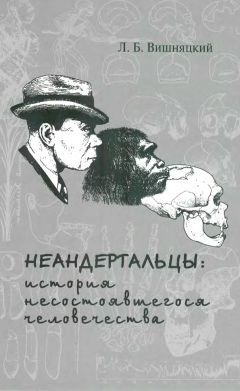borates F. The Old Stone Age. New York: McGrawHill, 1968.
itow/e M. L'homme fossile de la Chapelle-aux-Saints // Annales de Paleontologie. 1911-1913. N6. 11-172; 7,21-56; 8, 1-70.
Ягасе С. L. Refocusing on the Neanderthal problem // AA. 1962. N 64. P. 729- 741.
Brace С. L. The fate of the "Classic" Neanderthals: A consideration of hominid catastrophism // CAn. 1964. N 5. P. 3-43.
Brauer G. Die morphologischen Affinitaten des jungpleis-tozanen Stirnbeines aus dem Elbmtindungsgebiet bei Hahnofersand // Zeitschrift fur Morphologie und Anthropologic. 1980. N 71. P. 1-42.
Brauer G. New evidence on the transitional period between Neanderthal and modern man // JHE. 1981. N 10. P. 467-74.
Brauer G. The origin of modern anatomy: By speciation or intraspecific evolution? // EA. 2008. N 17. P. 22-37.
Briggs A. W., Good J. M., Green R. E., Krause J., Maricic T., Stenzel U., LaluezaFox C., Rudan P., Brajkovic D., Kucan Z, Gusic /., Schmitz R., Doronichev V. В., Golovanova L. V., Rasilla M. de la, Fortea J., Rosas A., Paabo S. Targeted retrieval and analysis of five Neandertal mtDNA genomes // Science. 2009. N 325. P. 318-321.
Brose D. S., Wolpoff M. H. Early Upper Paleolithic man and Late Middle Paleolithic tools // AA. 1971. N73. P. 1156-1194.
Brown PSutikna Т., Morwood M. JSoejono R. PJatmiko, Saptomo E. W., Awe Due R. A new small-bodied hominin from the Late Pleistocene of Flores, Indonesia//Nature. 2004. N 431. P. 1055-1061.
Bruner E. Comparing endocranial form and shape differences in modern humans and Neandertals: a geometric approach // PA. 2008. P. 93-106.
Bruner EHolloway R. L. A bivariate approach to the widening of the frontal lobes in the genus Homo II JHE. 2010. N 58. P. 138-146.
Bruner E., Manzi G. Paleoneurology of an "early" Neandertal: endocranial size, shape, and features of Saccopastore 1 // JHE. 2008. N 54. P. 729-742.
Bruner E., Manzi G., Holloway R. Krapina and Saccopastore: Endocranial morphology in the Pre-Wurmian Europeans // PB. 2006. N 108. P. 433-441.
Bruner E., Martin-Loeches M., Colom R. Brain shape and human variation: from integration to cognition // AJPA. 2010. N 141 (Supplement 50). P. 73-74.
Cameron D. W., Groves С. P. Bones, stones and molecules: "Out of Africa" and human origins. Burlington; San Diego; London: Elsevier. 2004.
Cann R. L., Stoneking M, Wilson A. C. Mitochondrial DNA and human evolution // Nature. 1987. N 325. P. 31-36.
Carbonell E., Bermudez de Castro J M., Pares J M. et al. The first hominin of Europe // Nature. 2008. N 452. P. 465-470.
CarbonellE., Castro-Curel Z. Palaeolithic wooden artifacts from the Abric Romani (Capellades, Barcelona Spain) // JAS. 1992. N 19. P. 707-719.
Carbonell E., Mosquera M. The emergence of a symbolic behaviour: the sepulchral pit of Sima de los Huesos, Sierra de Atapuerca, Burgos, Spain // CRP. N 5. P.155-160.
Carciumaru M., Moncel M.-H., Anghelinu M., Carciumaru R. The Cioarei-Borosteni Cave (Carpathian Mountains, Romania): Middle Palaeolithic finds and technological analysis of the lithic assemblages // Antiquity. 2002. N 76. P. 681— 690.
Caspari RRadovcic J. New reconstruction of Krapina 5, a male Neandertal cranial vault from Krapina, Croatia // AJPA. 2006. N 130. P. 294-307.
Castro-Curel Z, CarbonellE. Wood pseudomorphs from level I at Abric Romani, Barcelona, Spain // JFA. 1995. N 22. P. 376-384.
Cela-Conde С. У., Ayala F. J. Human evolution. Trails From the Past. New York: Oxford University Press, 2007.
Chase P. G. The cult of the cave bear. Prehistoric rite or scientific myth? // Expedition. 1987. N29. P. 4-9.
Chase P. G. The Emergence of Culture. The Evolution of a Uniquely Human Way of Life. New York: Springer, 2006.
Chase P. G., Dibble H. L. Middle Paleolithic symbolism: A review of current evidence and interpretations // Journal of Anthropological Archaeology. 1987. N 6. P. 263-296.
Chase P. G., Teilhol V. The fossil human remains // P. G. Chase, A. Debenath, H. L. Dibble, S. P. McPherron (eds). The Cave of Fontechevade: Recent Excavations and Their Paleoanthropological Implications. New York: Cambridge University Press. 2009. P. 103-116.
Chiarelli В. Spongiform encephalopathy, cannibalism and Neanderthals extinction // HE. 2004. N 19. P. 81-92.
Churchill S. E. Cold adaptation, heterochrony and Neandertals // EA. 1998. N 7. P. 46-61.
Churchill S. E. Bioenergetic perspectives on Neanderthal thermoregulatory and activity budgets // K. Harvati and T. Harrison (eds). Neanderthals Revisited: New Approaches and Perspectives. Dordrecht: Springer. 2006. P. 113-133.
Churchill S. Franciscus R. G., McKean-Peraza H. ADaniel J. AWarren B. R. Shanidar 3 Neandertal rib puncture wound and paleolithic weaponry // JHE. 2009. N57. P. 163-178.
Cloutier С. Г., Broadfield D. C.? Wolf Г., Halloran A. R. A semi-free ranging chimpanzee (Pan Troglodytes) gives birth at 65 years of age: Implications for delayed reproductive senescence // AJPA. 2009. N 138 (Supplement 49). P. 107.
Condemi S. The Neanderthals: Homo neanderthalensis ox Homo sapiens neanderthalensis? Is there a contradiction between the paleogenetic and the paleoanthropological data? // J. Orschiedt and G.-C. Weniger (eds). Neanderthals and Modern Humans — Discussing the Transition. Central and Eastern Europe from 50. 000-30. 000 B. P. Mettmann: Neanderthal Museum. 2000. P. 287-295.
Coolidge F. L., Wynn T. The Rise of Homo sapiens: The Evolution of Modern Thinking. Chichester: Wiley-Blackwell, 2009.
Coon C. S. The Origin of Races. New York: Alfred A. Knopf, 1962.
Cooper J. H. Did cannibalis and spongiform encephalopathy contribute to the demise of the Neanderthals // MQ. 2000. N 41. P. 175-180.
Curnoe D. et aL Timing and tempo of primate speciation// JEB. 2006. N 19. P. 59-65.
Czarnetzki AGaudzinski Pusch С. M. Hominid skull fragments from Late Pleistocene layers in Leine Valley (Sarstedt, District of Hildesheim, Germany) // JHE. N41. P. 133-140.
D 'Errico F. The invisible frontier. A multiple species model for the origin of behavioral modernity // EA. 2003. N 12. P. 188-202.
D Errico F. The origin of humanity and modern cultures: Archaeology's view // Diogenes. 2007. N 214. P. 122-133.
D'Errico F., Goni M. F. S. Neandertal extinction and the millennial scale climatic variability of OIS 3 // QSR. 2003. N 22. P. 769-788.
D Errico F., Zilhao J., Julien M., Baffler D., Pelegrin J. Neanderthal acculturation in Western Europe? A Critical review of the evidence and its interpretation // CAn. 1998. N 39 (Supplement). P. 1-44.
D Errico F., Henshilwood C., Lawson G., Vanhaeren M, Tillier A.-M, Soressi M., Bresson F., Maureille B., Now ell A., Lakarra J., Backwell L., Julien M. Archaeological evidence for the emergence of language, symbolism, and music — an alternative multidisciplinary perspective // JWP. 2003. N 17. P. 1-70.
DaviesR., Underdown S. The Neanderthals: a social synthesis // CAJ. 2006. N 16. P.145-164.
£)., Hublin J.-J., Holloway R., Ziegler R. On the phylogenetic position of the pre-Neanderthal specimen from Reilingen, Germany // JHE. 1998. N 34. P. 485-508.
Deaner R. O. et al. Overall brain size, and not encephalization quotient, best predicts cognitive ability across non-human primates // BBE. 2007. N 70. P. 115-124.
de Beaune S. A. Essai d'une classification typologique des galets et plaquettes utilises au Paleolithique // GP. 1989. N 31. P. 27-64.
Debenath ADibble H. Handbook of Paleolithic typology. Philadelphia: The University Museum, University of Pennsylvania, 1994.
Defleur A. Les sepultures mousteriennes. Paris: CNRS, 1993.
Defleur A., White Г., Valensi P., Slimak L., Cregur-Bonnoure E. Neanderthal cannibalism at Moula-Guercy, Ardeche, France // Science. 1999. N 286. P. 128-131.
De Giorgio M.,Jacobsson M, Rosenberg N. A. Explaining worldwide patterns of human genetic variation using a coalescent-based serial founder model of migration outward from Africa // PNAS. 2009. N 106. P. 16057-16062.
DeGusta D., Gilbert W. Turner S. P. Hypoglossal canal size and hominid speech//PNAS. 1999. N96. P. 1800-1804.
De Miguel C., Henneberg M. Variation in hominid brain size: How much is due to method? // HOMO. 2001. N 52. P. 2-56.
Doyle W. У., Johnston O. On the meaning of increased fluctuating dental asymmetry: a cross-population study // AJPA. 1977. N 46. P. 127-134.
DrellJ; L. L. Neanderthal: A history of interpretation // OJA 19. 2000. P. 1-24.
Duarte C., Mauricio J., Pettitt P. В., Souto P., Trinkaus E., Van der Plicht H., Zilhao JThe early Upper Paleolithic human skeleton from the Abrigo do Lagar Velho (Portugal) and modern human emergence in Iberia// PNAS. 1999. N 96. P.7604-7609.
Duarte C.,Hillson S. W., Holliday T. W., Trinkaus E. The Lagar Velho 1 humaqn skeletal inventory // J. Zilhao and E. Trinkaus (eds). Portrait of the Artist as a Child. The Gravettian Human Skeleton From the Abrigo do Lagar Velho and Its Archeological Context. (Trabalhos de Arqueologia 22). Lisboa: Instituto Portugues de Arqueologia. 2002. P. 220-241.
Duchin L. E. The evolution of articulate speech: comparative anatomy of the oral cavity in Pan and Homo // JHE. 1990. N 19. P. 687-697.
Einwdgerer Г., Friesinger H., Handel M, Neugebauer-Maresch C, Simon U., Teschler-Nicola M. Upper Palaeolithic infant burials // Nature. 2006. N 444. P. 285.
Eiseley L. Neandertal man and the dawn of human paleontology // QRB. 1957. N 32. P. 323-329.
Estabrook V. H. Sampling biases and new ways of addressing the significance of trauma in Neandertals. Unpublished Ph. D. dissertation. The University of Michigan, 2009.
Estevez J. Vanishing carnivores: What can the disappearance of large carnivores tell us about the Neanderthal world? // IJO. 2004. N 14. P. 190-200.
Fabre V., Condemi S., Degioanni A. Genetic Evidence of Geographical Groups among Neanderthals //PLoS ONE 4(4): e5151 (doi:10. 1371/journal. pone. 0005151), 2009.
Farizy C. Spatial patterning of Middle Paleolithic sites // JAA. 1994. N 13. P.153-60.
Feblot-Augustins J. Raw material transport patterns and settlement systems in the European Lower and Middle Palaeolithic: continuity, change and variability // W. Roebroeks and C. Gamble (eds). The Middle Palaeolithic Occupation of Europe. Leiden: University of Leiden. 1999. P. 193-214.
Fedele F. G. et al. Timescales and cultural process at 40,000 BP in the light of the Campanian ignimbrite eruption, Western Eurasia // JHE. 2008. N 55. P. 834- 857.
Fernandes P., Raynal J.-P., Moncel M.-H. Middle Palaeolithic raw material gathering territories and human mobility in the southern Massif Central, France: first results from a petro-archaeological study on flint // JAS. 2008. N 35. P. 2357-2370.
Fernandez S., Fuentes N., Carrion J. S., Gonzalez-Samperiz P., Montoya E., Gil G., Vega-Toscano GRiquelme J. A. The Holocene and Upper Pleistocene pollen sequence of Carihuela Cave, southern Spain // Geobios. 2007. N 40. P. 75-90.
Finlayson C. Neanderthals and Modern Humans. Cambridge: Cambridge University Press, 2004.
Finlayson C. The Humans Who Went Extinct: Why Neanderthals Died Out and We Survived. New York: Oxford University Press, 2009.
Finlayson J. C., Barton R. N. E., Stringer С. В. The Gibraltar Neanderthals and their extinction // J. Zilhao, T. Aubry, A. Faustino Carvalho (eds). Les premiers homines modernes de la Peninsule Iberique. (Trabalhos de Arqueologia 17). Lisboa: Instituto Portugues de Arqueologia. 2001. P. 117-122.
Finlayson C. et al. Late survival of Neanderthals at the southernmost extreme of Europe //Nature. 2006. N 443. P. 850-853.
Fitch W. T. Fossil cues to the evolution of speech // R. Botha, C. Knight (eds). The Cradle of Language. Oxford: Oxford University Press. 2009. P. 113-134.
Flas D. Etude de la continuite entre le Lincombien-Ranisien-Jerzmanowicien et le Gravettien aux pointes pedonculees septentrional// PE. 2000-2001. N 16-17. P. 163-189.
Freund G. Die Blattspitzen des Palaolithikums in Europa. Bonn: Ludwig Rohrscheid Verlag. 1952.





